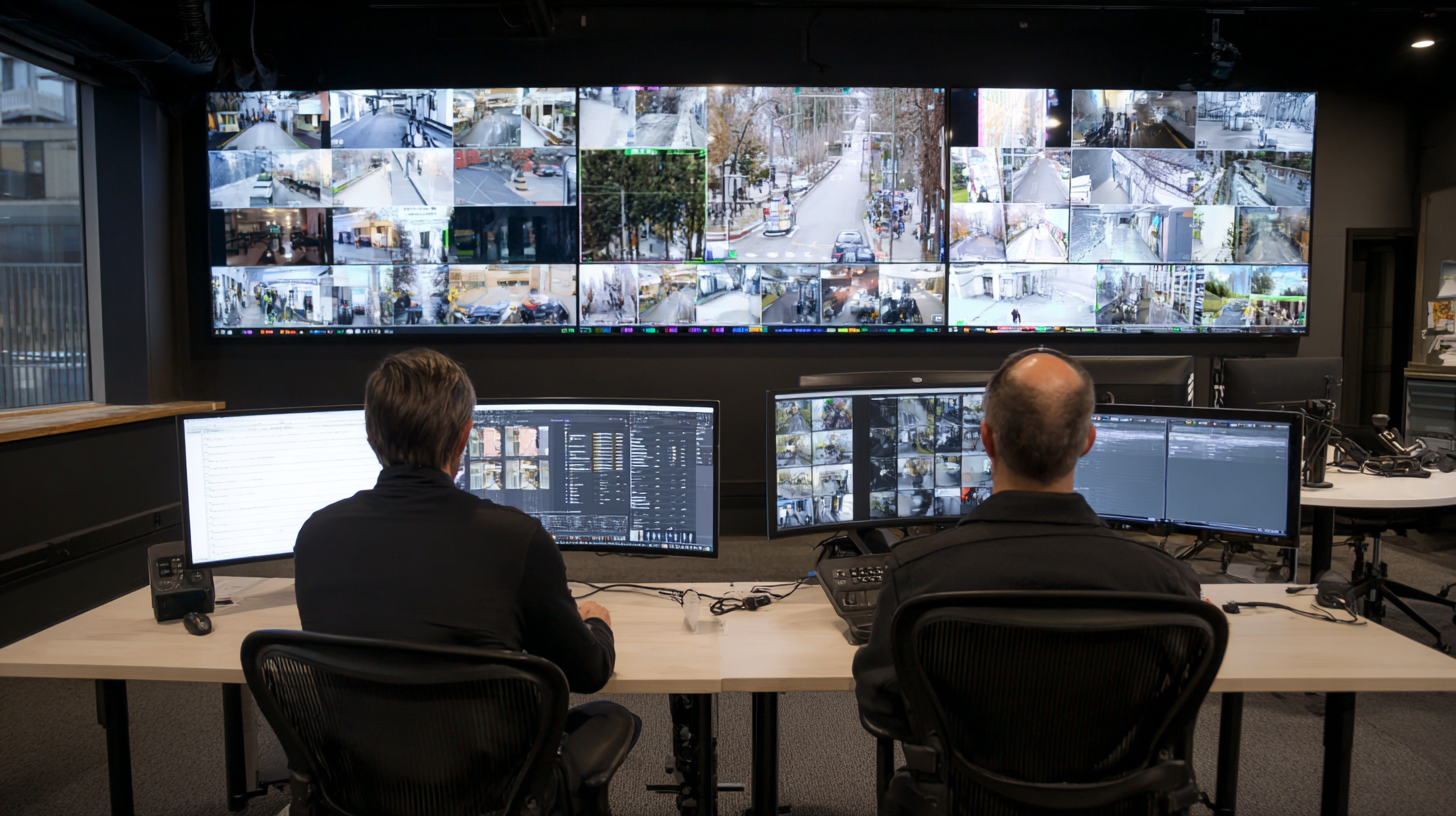Revolutionizing Security Management with Innovative Door Access Control Software Solutions
In today's rapidly evolving security landscape, the importance of robust and innovative security management solutions cannot be underestimated. As organizations strive to protect their assets, personnel, and confidential information, Door Access Control Software has emerged as a pivotal instrument in revolutionizing how security is administered. This software not only enhances physical security by controlling who can access specific areas but also streamlines operational efficiency through advanced user management and real-time monitoring capabilities. By integrating cutting-edge technology with intuitive interfaces, Door Access Control Software enables organizations to respond proactively to security threats, offering peace of mind in an increasingly complex environment. This article delves into the transformative power of these software solutions and explores the compelling reasons why they are essential for modern security management.

Emerging Trends in Door Access Control Technology for Enhanced Security
 The landscape of door access control technology is witnessing a paradigm shift, driven by the burgeoning demand for smart security solutions. By 2033, the smart lock market is projected to exceed USD 16.47 billion, underscoring the growing consumer inclination for enhanced convenience and security in their smart homes. This evolution reflects not only a trend towards integrating advanced locking systems but also highlights the increasing consumer expectation for seamless connectivity and user-friendly interfaces.
The landscape of door access control technology is witnessing a paradigm shift, driven by the burgeoning demand for smart security solutions. By 2033, the smart lock market is projected to exceed USD 16.47 billion, underscoring the growing consumer inclination for enhanced convenience and security in their smart homes. This evolution reflects not only a trend towards integrating advanced locking systems but also highlights the increasing consumer expectation for seamless connectivity and user-friendly interfaces.
Innovations in door access control are set to further revolutionize security management. The global smart card integrated circuit (IC) market is anticipated to grow from USD 3.88 billion in 2025 to approximately USD 5.45 billion by 2034, showcasing the significant investments in smart credentials for securing premises. As security technology advances, organizations and homeowners alike are taking advantage of these cutting-edge solutions to fortify their security while optimizing accessibility.
Tips: When selecting door access control systems, prioritize solutions that offer remote access capabilities and robust encryption measures. Additionally, consider systems that integrate effortlessly with existing smart home devices to maximize convenience and security.
Key Features of Innovative Software Solutions for Door Access Management
Innovative door access control software solutions are transforming how businesses manage security. One of the key features of these systems is real-time monitoring, which allows security personnel to track who is entering and exiting the premises instantaneously. This feature not only enhances security but also provides valuable data analytics for assessing facility usage patterns.
Another significant aspect of these software solutions is their user-friendly interface. The ability to manage access permissions through a centralized system simplifies operations, allowing administrators to grant or withdraw access easily. Moreover, many systems offer mobile app integration, enabling remote management from smartphones or tablets, which adds a layer of convenience for busy professionals.
**Tip:** When selecting door access control software, prioritize scalability to ensure that the system can grow with your business needs. Consider solutions that offer customizable features and the option to integrate additional security measures like surveillance cameras or alarm systems for comprehensive protection. Always ask for a demo to gauge usability before making a final decision.

Integrating AI and IoT for Smart Door Access Control Systems
The integration of Artificial Intelligence (AI) and the Internet of Things (IoT) is transforming the landscape of door access control systems, ushering in a new era of security management. According to a report by Markets and Markets, the global smart door lock market is expected to grow from $2.3 billion in 2020 to $6.8 billion by 2025, reflecting a compound annual growth rate (CAGR) of 24.6%. This growth is primarily driven by advancements in AI and IoT technologies, which enhance the ability to monitor and manage access to facilities remotely.
AI algorithms can analyze vast amounts of data from IoT devices, allowing for real-time decision-making and improved threat detection. For instance, AI-powered systems can learn user behavior patterns and adapt accordingly, significantly reducing the chances of unauthorized access. Moreover, IoT-enabled sensors can remotely notify security personnel of potential breaches. According to a study by Gartner, organizations leveraging AI in their security operations can reduce incident response times by up to 40%. This not only elevates security standards but also streamlines administrative processes, making innovative door access control solutions essential for modern security management.
Building Scalable and Customizable Access Control Software Architectures
In an era where security is paramount, building scalable and customizable access control software architectures is a critical step for any organization. This journey begins with thorough planning, where defining user roles, assessing security requirements, and identifying integration points can make all the difference. Utilizing agile methodologies during the development phase allows for iterative feedback and enhancements, ensuring the software can adapt to evolving security landscapes.
**Tips:** Always prioritize user privacy and data protection during development. Implementing a zero-trust model can significantly enhance security, ensuring that every access request is authenticated and validated.
Deployment is not the final step; ongoing support and updates are vital for maintaining security effectiveness. Regularly reviewing and testing the access control system helps in identifying vulnerabilities and ensuring compliance with industry standards. Additionally, leveraging innovative technologies, such as AI-driven analytics, can provide insights into user behavior, further enhancing security measures.
**Tips:** Keep track of emerging trends in security management and regularly update your software to keep pace with new threats. Collaborating with IT security experts during and after deployment can provide invaluable insights and improvements.
Best Practices for Implementing Digital Access Control Solutions in Organizations
Implementing digital access control solutions in organizations requires careful planning and adherence to best practices to maximize efficiency and security. As the access control market is projected to grow significantly from $11.17 billion in 2020 to $20.02 billion by 2027, businesses must adopt innovative door access control software to stay competitive. This software not only streamlines entry processes but also integrates advanced features that address evolving security challenges.
Organizations should prioritize the integration of digital twin technology, which utilizes real-time data to enhance the functionality of physical systems. While this technology offers substantial cost savings and extended lifespan of assets, it introduces new security vulnerabilities that cannot be overlooked. Establishing comprehensive security controls is essential for safeguarding sensitive information and infrastructure against potential risks. This involves training personnel on digital security protocols and employing AI-driven systems for proactive threat detection and mitigation, ensuring that the organization's security posture remains robust in a rapidly advancing tech landscape.
Revolutionizing Security Management with Innovative Door Access Control Software Solutions
| Dimension | Description | Best Practices | Implementation Challenges |
|---|---|---|---|
| Hardware Integration | Compatibility with existing hardware systems. | Conduct thorough audits of existing systems. | Technical limitations of older hardware. |
| User Authentication | Methods of verifying user identities. | Implement multi-factor authentication. | User resistance to new authentication methods. |
| Data Security | Protection of access logs and user data. | Use encryption for data transmission. | Potential data breaches if unprotected. |
| User Training | Educating users on new systems. | Provide hands-on training sessions. | Ensuring all users are trained effectively. |
| Access Management | Controlling who has access to what areas. | Regularly review access permissions. | Complexity of managing permissions. |
Related Posts
-

Digital Innovations in Best Access Control Security Solutions
-

Understanding Import and Export Certifications for Best Security Access Control Systems
-

Global Trust in Chinese Manufacturing Delivering Consistent Quality in the Best Access Control Systems
-

Unlocking Success with Best Access Control Solutions in Manufacturing and Beyond
-

What Are Door Access Cards: Essential Insights for Global Buyers
-

Top Strategies for Implementing an Effective Access Card System in Modern Workplaces
- • HighpowerOne Touchscreen Controller • HighpowerOne Mobile Credential App
- Highpower Management System
- • Pushplate 100 PNZ
- • Pushplate 110 PNZ
- • Pushplate 120/140 PNZ
- • Pushplate 130/150 PNZ
- • Pushplate 200 PNZ
- • Pushplate 100
- • Pushplate 110
- • Pushplate 120/140
- • Pushplate 130/150
- • Pushplate 200
Mechanical Timers
Proximity ID Access Cards and Fobs
Proximity Card Readers
- • Proximity Reader P-300
- • Proximity Reader P-400
- • Proximity Reader P-500
- • Proximity Reader P-620
- • Proximity Reader P-640
- • Proximity Reader P-710
- • Proximity Reader P-900
- • Ranger Proximity Readers
- • Ranger Controls
- • Sure-Fi Wireless Interfaces
Smart Series JX Readers
Electromagnetic Locks
Highpower Power Supplies
• H505
• H512
Security Products Summary
